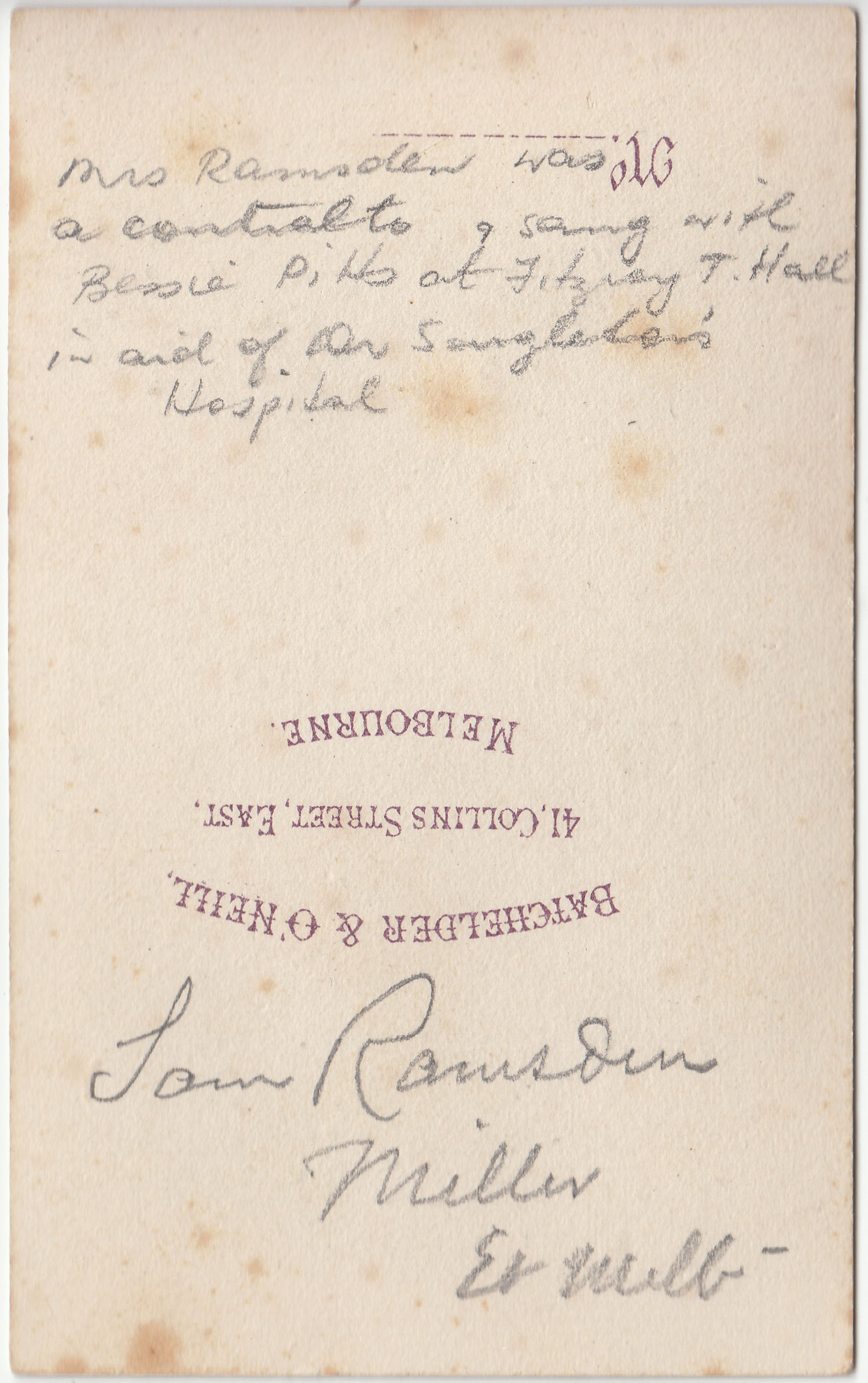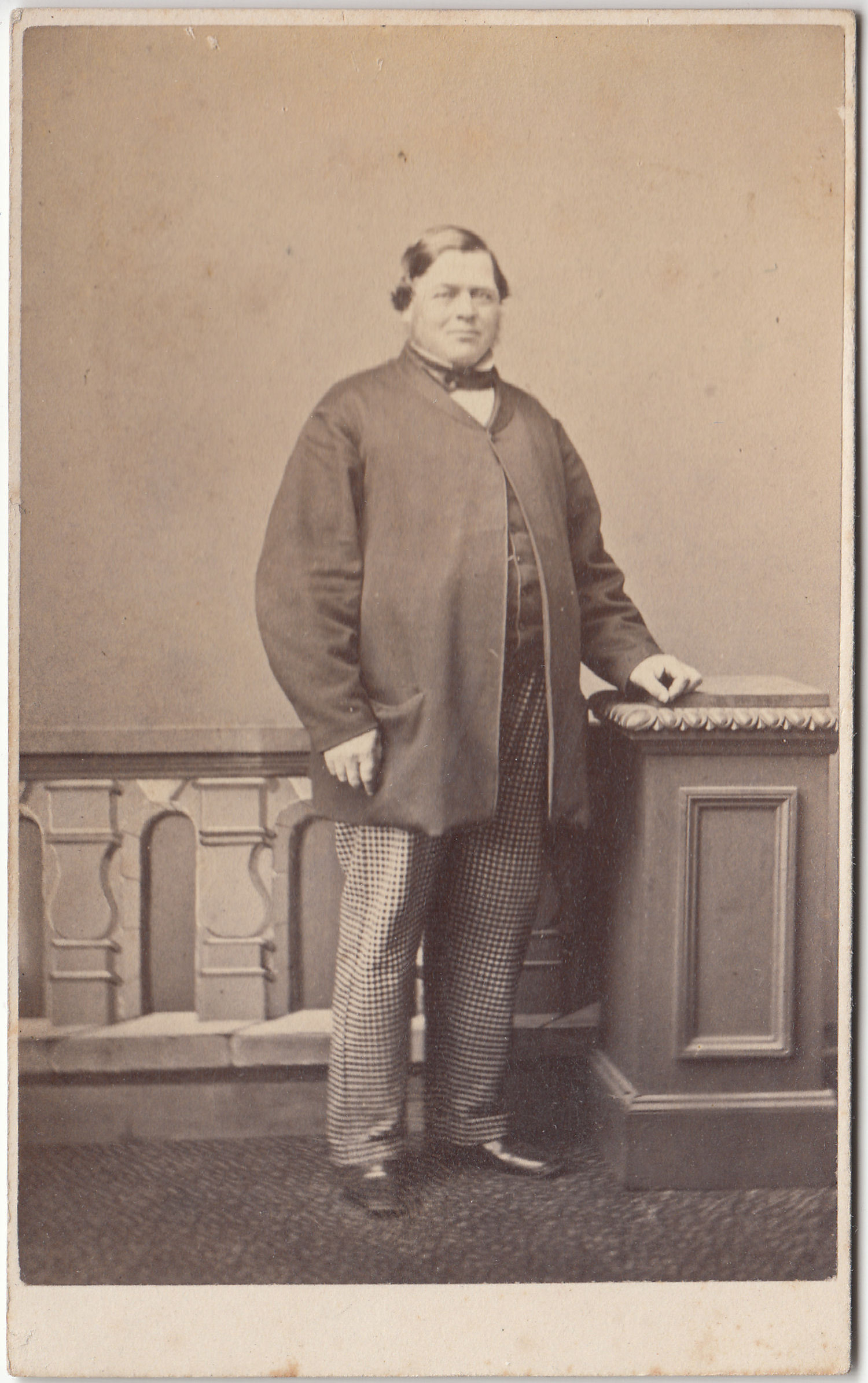Melbourne Argus 20th Feb.1877.
DEATH OF MR. SAMUEL
RAMSDEN.
Mr. Samuel Ramsden died at 4 o'clock yes-
terday morning, at his residence, 7 Fitzroy-
terrace, corner of Gipps and Clarendon
streets, East Melbourne. For some time
back he had been in ill health, suffering from
liver disease and dropsy, and at the begin-
ning of this year he felt so ill that he was
obliged to seek the advice of Dr. Wilkie, his
medical attendant. As he continued to get
worse, Mr. Fitzgerald was called in for con-
sultation, and on that gentleman having
subsequently to leave for Sydney, the advice
and attendance of Drs. Motherwell and J.
Robertson were secured. Mr. Ramsden's
complaint, however, did not yield to treat-
ment, but progressed rapidly to an unfavour-
able termination. On Saturday evening
symptoms of coma set in, and the insensi-
bility which took place was followed in a
few hours by death. The funeral will take
place on Wednesday.
The career of Mr. Ramsden must be chiefly
of interest to the public as one of great busi-
ness success, for he never was a public man
in the sense which implies that he took a
noticeable part in politics. The particulars
of his life might be made to show, were it at
all needful, how steady perseverance and in-
dustry, unassisted by the advantages of edu-
cation, but favoured with suitable oppor-
tunities, enable a man in these colonies to
rise from a humble position to one of
opulence. Though Mr. Ramsden hardly ever
entered into an enterprise which did not
turn out well, it can scarcely be said that he
had more than an ordinary share of what is
called luck. The shrewdness and foresight
which conducted him into sound under-
takings piloted him safely past all the rash or
dangerous ventures and speculations which
tempted many of his contemporaries and
overthrew them. He had no belief in a rapid
or easy road to wealth. Samuel Ramsden
was born in Yorkshire, but moved to Man-
chester to learn the trade of a stonemason,
and there made the acquaintance of Charles
and Henry Brown. His two friends came
out to Port Phillip in 1841, and he followed,
accompanied by his wife, in 1843 or 1844.
At that time, of course, Melbourne was a very
small town, and it had not quite recovered
from a period of severe depression. The first
job Mr. Ramsden got was to kerb the foot-
path in front of the Union Bank, which was
then in course of erection on the allotment
on which it now stands at the corner of Col-
lins-street and Queen-street. His friends the
Browns had the foundations of the building
to put up. Then he went to Portland, where
there were some public works in pro-
gress that afforded him employment. On
his return he entered into partnership
with the Browns (who were bricklayers) as
builders, and the first contract they had
was the erection of St. Peters Church, on
the Eastern-hill, for £820. So much was the
locality then in the country that, as people
who remember the time say, the church
could not be seen from any distance on ac-
count of the gum trees and bushes that sur-
rounded it. They quarried the stone for the
first portion of the asylum at the Yarra Bend,
and put up the first additions which were
made to it. They had not many competitors.
The aptitude they showed for work—it was
not an uncommon thing in those times to
work 18 hours a day—soon placed them in
front, and practically gave them all the trade.
They carried on business for nine or ten
years, and then separated to revisit England.
Mr. Ramsden, when at home, bought a
barque in 1854, which was built to his order
and intended for the colonial trade. The
Eliza Ramsden, as the vessel was called, made
a voyage from Melbourne to Mauritius and
back, but was lost at the commencement of
the third trip. She ran ashore in Port Phillip
Harbour, near the sanatory station. Mr.
Ramsden, on his return from England took
to the business of a flour miller. Mr. David
Aitken and he entered into partnership, and
built mills at Carlton and Castlemaine.
They carried on operations together for
several years. Mr. Ramsden then took the
Melbourne mill into his own hands, and Mr.
Aitken the Castlemaine mill. The flour-
mill trade proved as profitable as the build-
ing trade, and grew eventually to large
dimensions. About 10 years ago, Mr. Rams-
den enlarged his operations by the purchase
of plant which had been imported by the late
Thomas Kenny (formerly of Sands and
Kenny), for the manufacture of paper. The
intention of Mr. Kenny was to build the
paper mill at Dight's Falls, and drive
the machinery by water power, which
was to be obtained by the diversion
of a portion of the stream through
a cut across the bend. Mr. Ramsden
meant to adhere to the original plan, but
he subsequently chose a place which seemed
more suitable—the flat below Prince's-
bridge, where he rented a piece of ground
from the Government, and substituted steam
power for water. His old friend, Mr. Charles
Brown, superintended the erection of the
mill house and the tall chimney shaft. Some
years elapsed before Mr. Ramsden got this
new business to pay; but latterly we under-
stand, it has done very well. Mr. Rams-
den acquired a considerable amount of city
and suburban property. He also became a
large landowner some years ago in the Wes-
tern district and the station was placed
under the management of one of his sons.
Though a man of heavy weight, he was from
first to last of very active habits, and often
surprised people with feats of agility of which
they hardly thought him capable. Mr. Rams-
den was for a short time a member of the
Borough Council of East Collingwood.

 Stephen.J. Arnold
Stephen.J. Arnold 
 Stephen.J. Arnold
Stephen.J. Arnold 